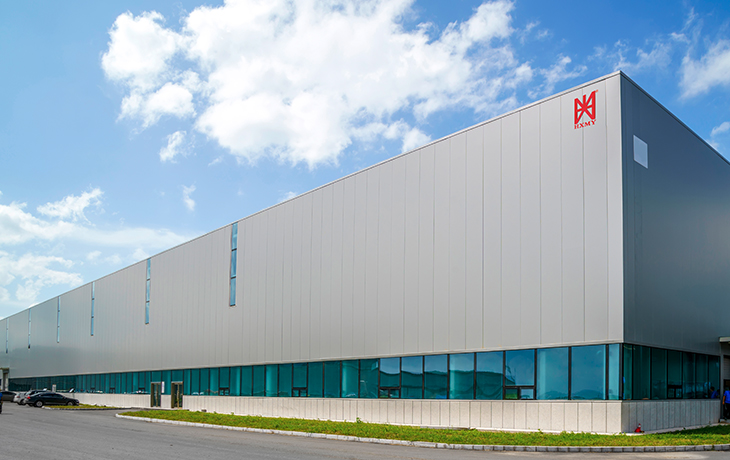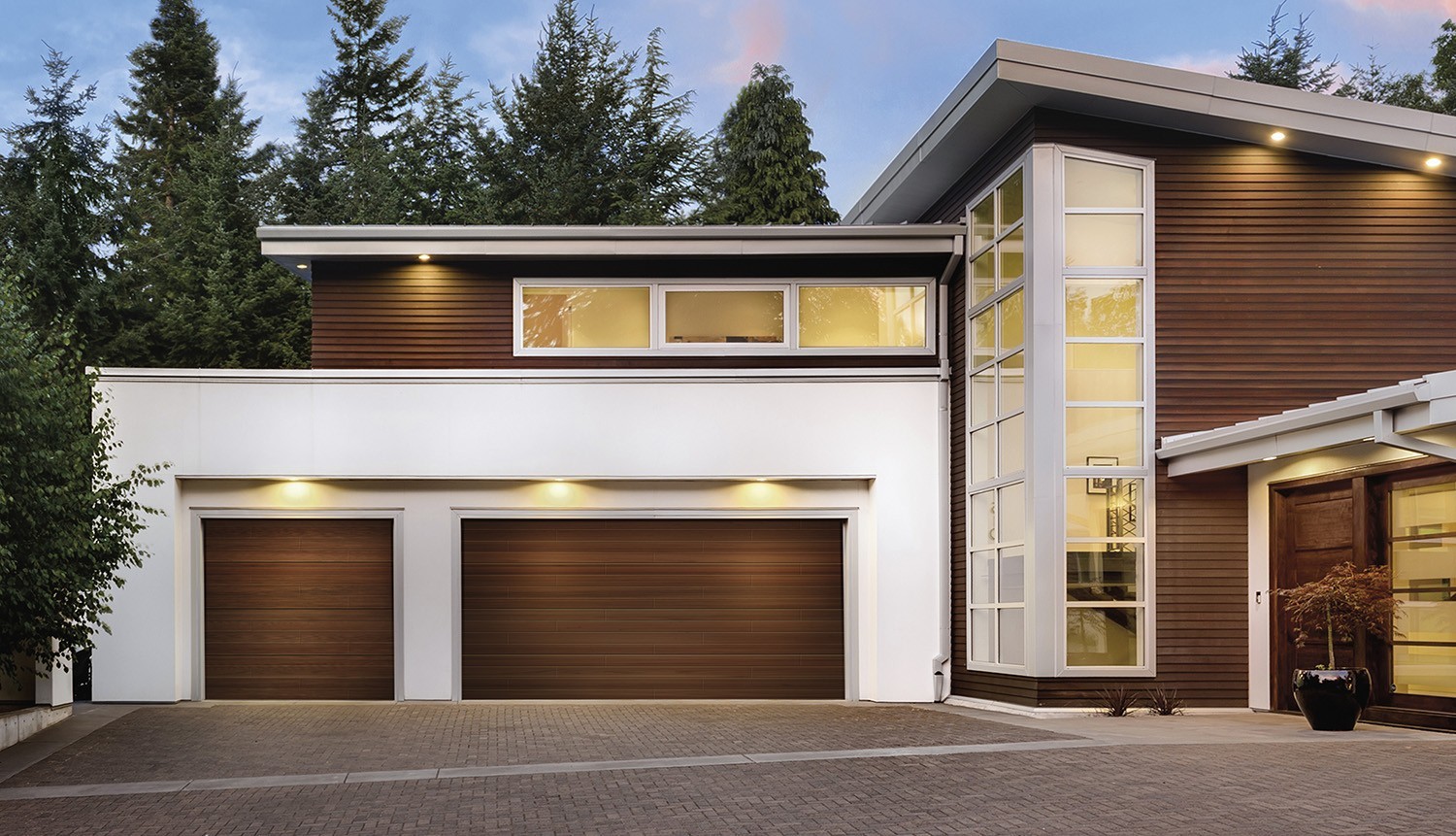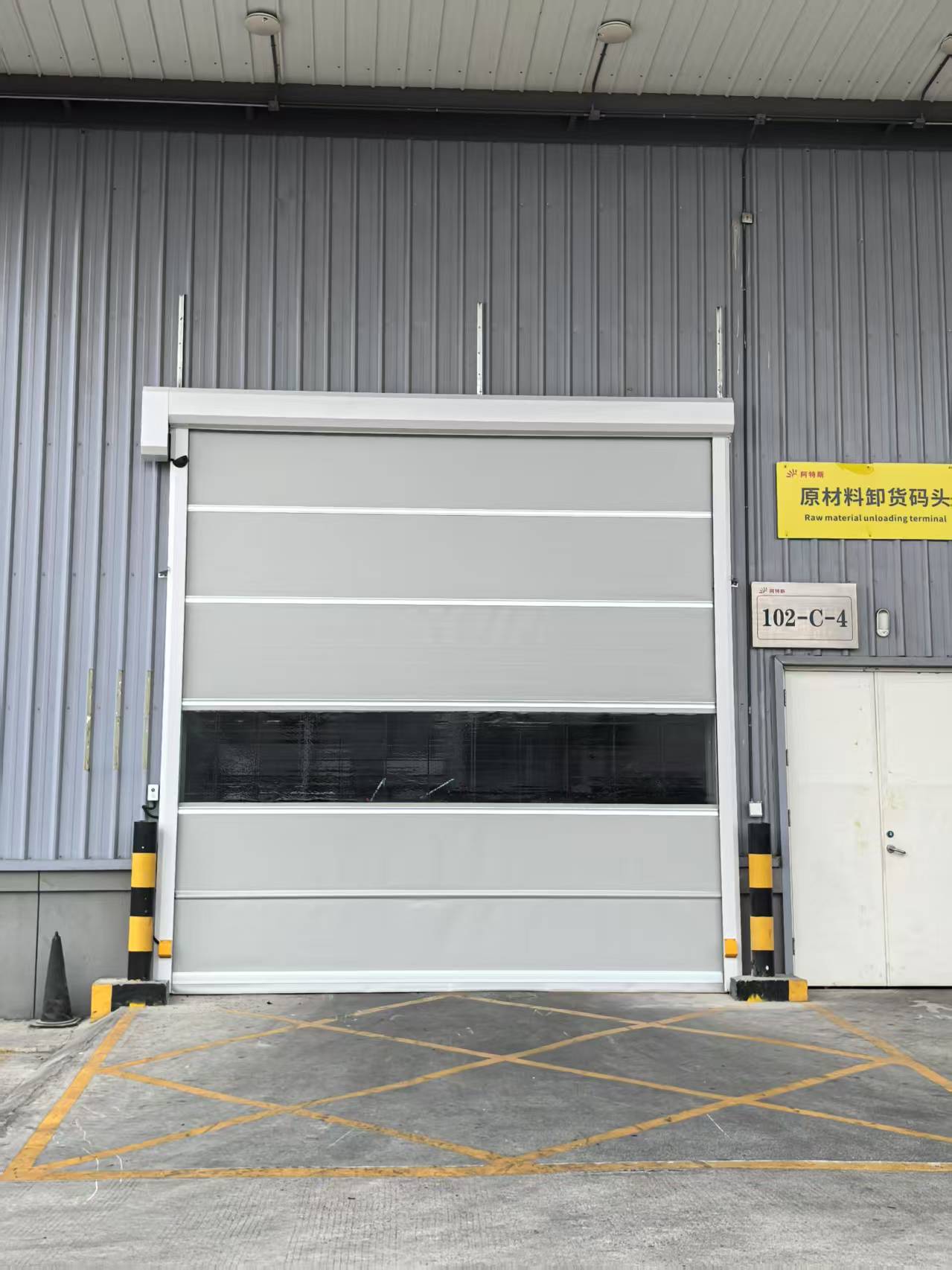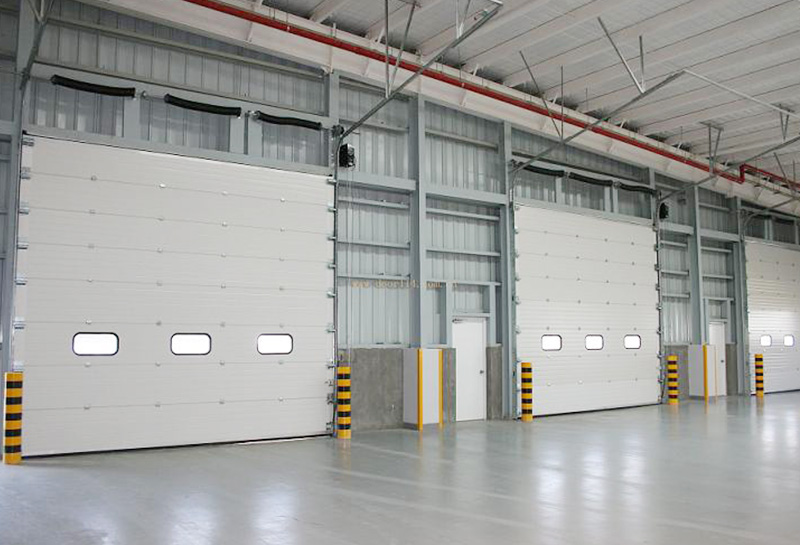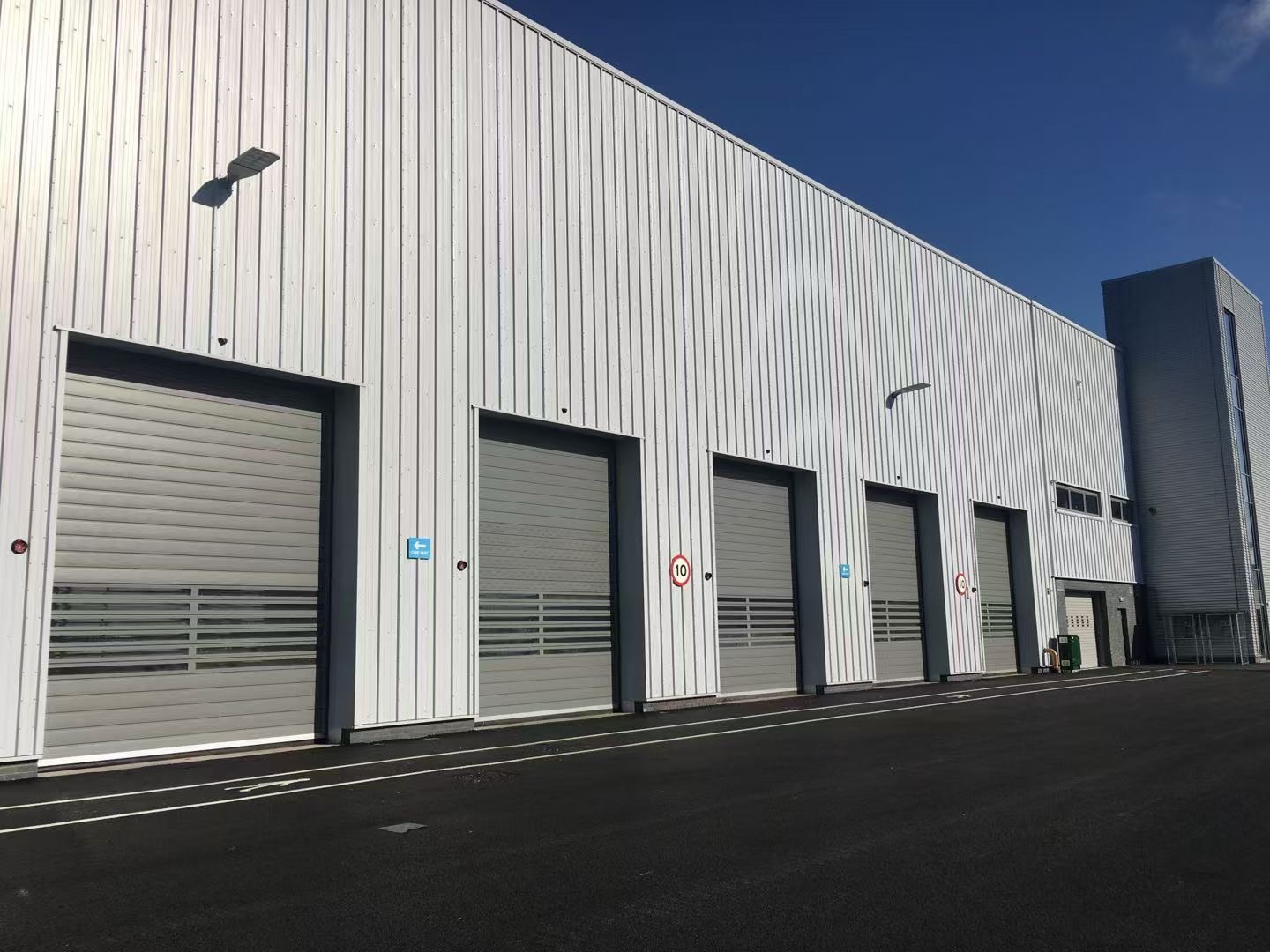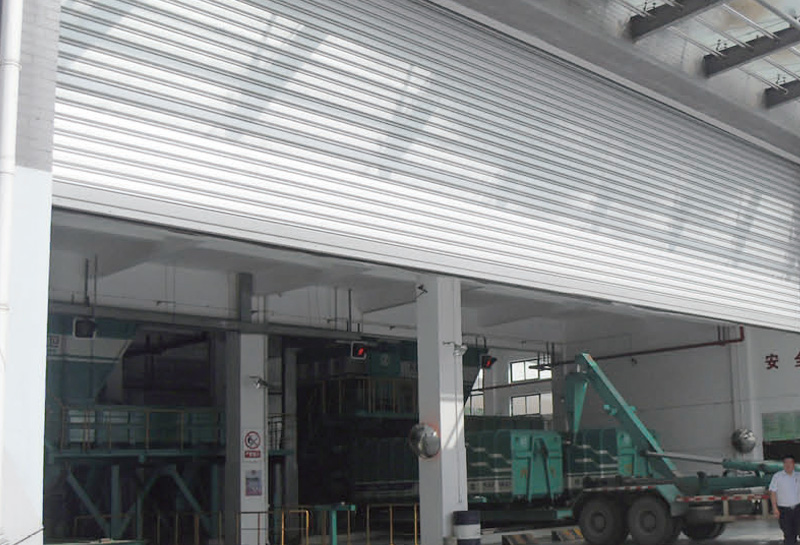Industrial sectional doors are fundamental to optimizing efficiency in commercial and industrial operations. Engineered to open vertically and retract overhead, these doors deliver unparalleled space efficiency and operational versatility. Their robust design meets rigorous demands across diverse sectors – from warehouses, manufacturing plants, and logistics hubs to pharmaceutical facilities, food processing sites, and high-traffic showrooms. By seamlessly integrating security, durability, and space-saving benefits, sectional doors provide the adaptive performance essential for dynamic industrial environments.
Why Industrial Sectional Doors Dominate: Core Advantages Explained
The preference for industrial sectional doorsderives from three strategic advantages:
1. Enhanced Security
Businesses prioritizing asset and premises protection benefit from their robust barrier against unauthorized access.
2. Superior Thermal Performance
Critical for temperature-sensitive environments, the doors' insulation capabilities significantly reduce energy consumption.
3. Engineered Durability
To withstand intensive operations, these doors are constructed with heavy-duty materials that ensure long-term reliability.
Manufacturers' consistent focus on these features validates their essential role in efficient industrial solutions.
Material-Based Types:
Steel sectional doors remain a prevalent choice due to their inherent strength, durability, and cost-effectiveness. They are extensively deployed in warehouses and factories where security and impact resistance are paramount.
Businesses favor aluminum sectional doors for their lightweight properties, corrosion resistance, and contemporary aesthetic appeal. These doors are frequently selected for showrooms, service stations, and car wash facilities where visual presentation and moisture resistance are critical.
Glazed sectional doors are engineered to maximize natural light penetration and visibility in commercial spaces such as showrooms and shopping malls. Certain glazed models incorporate insulation to balance light transmission with thermal efficiency.
Insulated sectional doors are essential for environments requiring strict temperature control. They typically utilize core materials like polyurethane (PU) – renowned for its high R-value and superior thermal performance – or more economical polystyrene (EPS). These doors prove vital in warehouses, cold storage facilities, and any application demanding stable temperatures for product integrity and energy conservation.
Functionality-Based Types:
Engineered for rapid operation, high-speed sectional doors achieve opening/closing velocities of up to 2.5 m/s (8 ft/s). These doors are essential in high-traffic zones, logistics hubs, and temperature-sensitive environments where minimizing access time is critical. Advanced safety systems such as photoelectric curtains are typically integrated.
Fire-rated sectional doors are specifically constructed to compartmentalize fire and smoke, serving as vital safety barriers for regulatory compliance in designated applications.
Direct drive sectional doors deliver smooth and reliable performance, making them ideal for facilities requiring frequent cycling operations.
This functional diversity demonstrates exceptional adaptability of industrial sectional doors in meeting specialized operational demands across industries.
Key features:
When evaluating industrial sectional doors, several key features require careful assessment. Panel thickness and construction significantly impact the door’s strength, insulation capabilities, and overall durability. For instance, thicknesses of 40mm or 42mm are common, as are 2-inch thick panels. These typically feature sandwich-panel construction with internal steel reinforcement for added rigidity. Steel doors may incorporate 20-gauge or 24-gauge steel, which directly affects their robustness.
Insulation materials and their corresponding R-values are critical for thermal performance. Polystyrene insulation typically provides an R-value of approximately 7.35, while polyurethane can achieve superior R-values ranging from 18.4 to 26, indicating enhanced resistance to heat transfer. Understanding R-values enables businesses to select doors that meet specific temperature control requirements.
Track systems and lifting mechanisms govern door operation. Standard lift doors slide upward and backward horizontally. High lift doors ascend vertically before transitioning to a horizontal position, whereas vertical lift doors rise straight upward, maximizing headroom clearance within the facility.
Hardware and accessories play a vital role in the door’s functionality and longevity. This includes hinges, rollers, and seals – critical components for preventing air and water infiltration. Additional options such as windows (available in various shapes and sizes with features like double glazing) and pass doors for pedestrian access further enhance utility. The detailed specifications manufacturers provide for these features underscore their technical significance in informed decision-making.
The Multifaceted Advantages: Benefits of Industrial Sectional Doors for Businesses
Industrial sectional doors deliver comprehensive advantages that significantly enhance business efficiency and security. Security remains paramount for industrial operations, where these doors provide robust deterrence against unauthorized access and potential threats. Steel construction with heavy-duty locking systems creates formidable barriers. Integrated internal locking mechanisms further fortify security, while compatibility with
Energy Efficiency:
Insulated sectional doors deliver substantial energy efficiency benefits. By minimizing heat transfer, they generate significant heating and cooling cost savings. Insulation effectiveness is quantified by R-value, where higher values denote superior thermal resistance. Critical sealing of edges prevents air infiltration, further enhancing energy conservation. Beyond financial advantages, this efficiency reduces environmental impact through lower energy consumption.
Space Optimization:
Sectional doors excel in space utilization. Their vertical operation maximizes interior and exterior facility space—unlike traditional swing doors that require substantial clearance arcs.
Durability:
Engineered for demanding industrial environments, sectional doors utilize robust materials like galvanized steel or aluminum. This construction ensures extended service life (typically 15-30 years) while minimizing maintenance requirements.
Quiet Operation:
Sectional doors operate with exceptional smoothness and low noise, facilitated by precision-guided rollers and balanced spring systems. This is particularly advantageous in environments where noise reduction is critical.
Customization Capabilities:
Extensive customization options enable businesses to tailor doors to exact requirements. Available choices include diverse sizes, colors, materials, and functional features such as windows, pass doors, and automation systems. This flexibility ensures perfect alignment with both operational needs and aesthetic preferences. The comprehensive benefits of industrial sectional doors establish them as highly adaptable assets across diverse business applications.
Learning from Experience: Industry Case Studies
Real-world implementations provide valuable insights into industrial sectional door applications. Consider a logistics enterprise comparable to Jaguar Land Rover or FedEx Ground, deploying high-speed insulated sectional doors at loading docks. This upgrade typically enhances operational efficiency through accelerated cycle times while improving warehouse temperature control—yielding energy savings and superior goods preservation.
In pharmaceutical environments where controlled climates are critical, hospitals and warehouses utilize heavy-duty insulated sectional doors to ensure product integrity and regulatory compliance. These doors deliver essential thermal insulation and heightened security for sensitive materials.
Another demonstrative case involves replacing obsolete non-compliant warehouse doors. As evidenced by SAA Security's project, modern industrial sectional door retrofits substantially elevate safety standards and operational throughput. Such upgrades ensure regulatory alignment while providing reliable, secure access solutions. Collectively, these cases demonstrate cross-sector benefits and successful implementations, offering actionable insights for prospective adopters.
Conclusion: A Strategic Investment for Industrial Efficiency and Security
Industrial sectional doors represent a strategically sound investment, delivering compounded returns through enhanced operational efficiency and fortified security. Their engineered integration of durability, energy conservation, and automation readiness provides a future-proof solution that aligns with evolving industrial demands.
For more solutions for industrial doors, please click on the link below:https://www.hexiondoor.com/products




